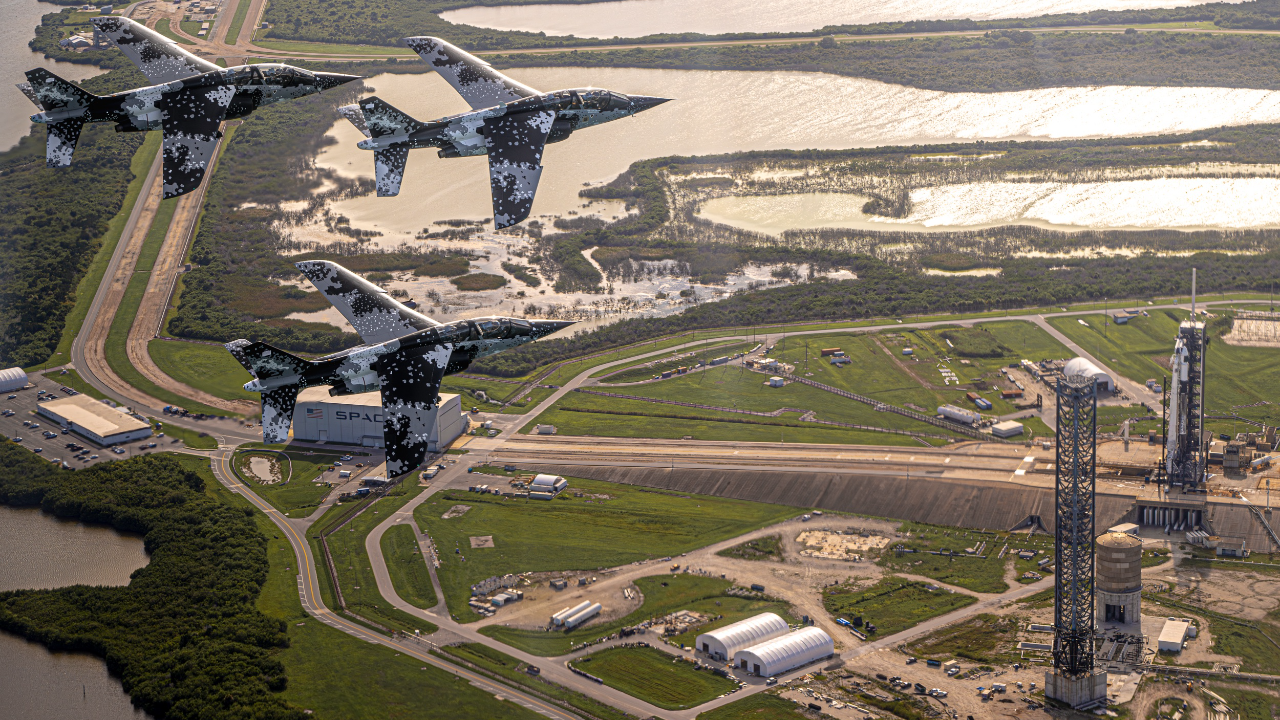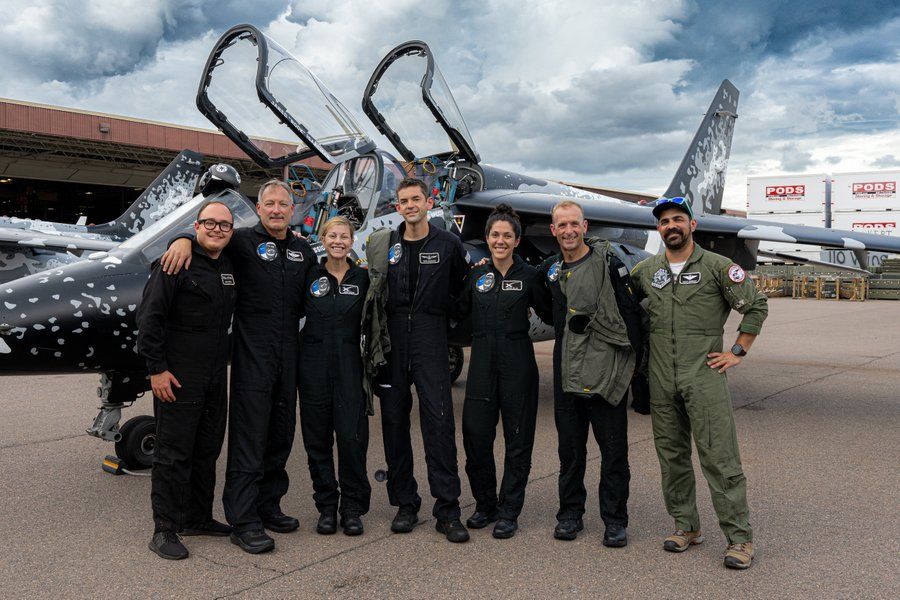Summary
- Polaris Program conducted a flyover at Kennedy Space Center with Falcon 9 & Dragon vertical.
- Crew Dragon Resilience is reusable and has flown twice, once commanded by Jared Isaacman.
- The Polaris Program aims to advance human spaceflight capacities with SpaceX spacecraft.
On Tuesday, the Polaris team just conducted a flyover at Kennedy Space Center with Falcon 9 and Dragon vertical on pad 39A with Aero L-39 Albatros high-performance jet trainers. Led by Jared Isaacman, the Polaris program is an upcoming private spaceflight program that will consist of three missions using SpaceX spacecraft. Recently, SpaceX released pictures of its twin Dragon spacecraft (Polaris Dawn & Crew-9), which were due to be launched within weeks of each other.
Polaris teams fly by Kennedy Space Center
On September 5th, the Polaris Program posted on X (formerly Twitter) pictures of three L-39 Albatros trainers flying over the Kennedy Space Center in Florida, where the first Polaris mission is due to be launched in August 2024.
The spacecraft Crew Dragon Resilience (serial number C207) is reusable and has already flown twice. The first flight took place on 16 November 2020 on the Crew-1 mission (the first operational crewed flight of a Crew Dragon spacecraft), and the second launched on 16 September 2021 on the Inspiration4 mission (also commanded by Jared Isaacman).
Photo: Polaris Program
Jared Isaacman is expected to command all three missions, and Scott Poteet, Sarah Gillis, and Anna Menon are the three other astronauts on the first mission. Sarah Gillis retweeted the Polaris Program post with the caption, “She sure looks beautiful on the pad 🐉 Awesome time flying with the crew, keeping skills sharp while we wait for the weather to clear!”
The Polaris Program
Entrepreneur Jared Isaacman has organized the Polaris Program, which will be the first all-civilian spaceflight. The mission plans to complete two missions with SpaceX’s Crew Dragon spacecraft, with the third and final mission being completed using the new SpaceX Starship still under development.
The Polaris Program website calls the missions “a first-of-its-kind effort to rapidly advance human spaceflight capabilities while continuing to raise funds and awareness for important causes here on Earth.” It aims to “demonstrate important operational capabilities that will serve as building blocks to help further human exploration to the Moon, Mars, and beyond.”
The first Polaris Dawn mission will spend up to five days in orbit, flying higher than any Dragon mission to date and endeavoring to reach the highest Earth orbit ever flown. The final fight is planned to be the first human space flight on the Starship. Founded in 2002, SpaceX has upended and revolutionized the space launch industry, massively bringing down costs with its reusable systems.


